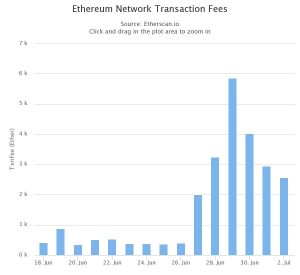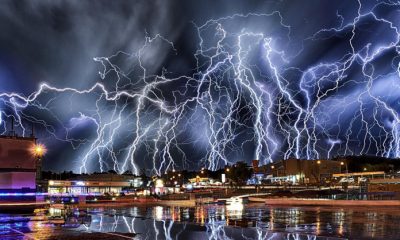Lightning Network
Rising ETH fees underline the need for Plasma & Lightning

In recent days we have seen another example of the importance of scaling. Ethereum – the second largest cryptocurrency by market cap- has seen its transactions fees (gas) increase dramatically. This is now believed to be the result of ill-advised tactics being used on the part of a small exchange. FCOIN has decided to allow users of their platform to vote on which alt-coins they would like to see listed on the exchange. Rather than hosting a poll, allowing for one vote per user, the exchange decided to follow a different path. They are counting each deposit as one vote. This has resulted in an enormous amount of deposits. People that would normally only have one vote are sending multiple deposits to the exchange in an effort to get their favourite token listed.

Gas needed has spike coinciding with FCOINs voting scheme.
The reason this situation is concerning is for multiple reasons. First, it is allowing people that have the means to get coins listed that will directly benefit them. Effectively negating the votes of those that do not partake in the poor voting mechanism. Secondly, and more importantly, it greatly underlines the need for increased scaling across the ETH network. One exchange should not hold the power to influence the network to this degree.
What does this have to do with the Lightning Network?
Acting in much the same way the Lightning Network does, ETH is in the midst of developing a second layer protocol. This protocol will allow for off-chain transactions, and solve the scaling issues currently being seen. This second layer is known as Plasma, and functions similarly to the Lightning Network.
This situation is also reminiscent of one that BTC went through months ago. In the peak of the market boom, many were condemning BTC for its ridiculous transaction fees. It is now believed that a group of people were spamming the BTC network at this time. Their goal in doing so was to create artificial network congestion resulting in increased fees. Although their motives might be different, the situation was the same that ETH is dealing with right now. A small group imparting a negative influence on the whole network, skewing costs for everyone involved.
In time, these situations will not occur. They are a necessary evil to highlight network weaknesses though. If second layer protocol such as the Lightning Network and Plasma w/ Sharding deliver on their promises, then we shouldn’t worry. Until then, expect for network spamming and shady tactics to continue affecting the networks.











